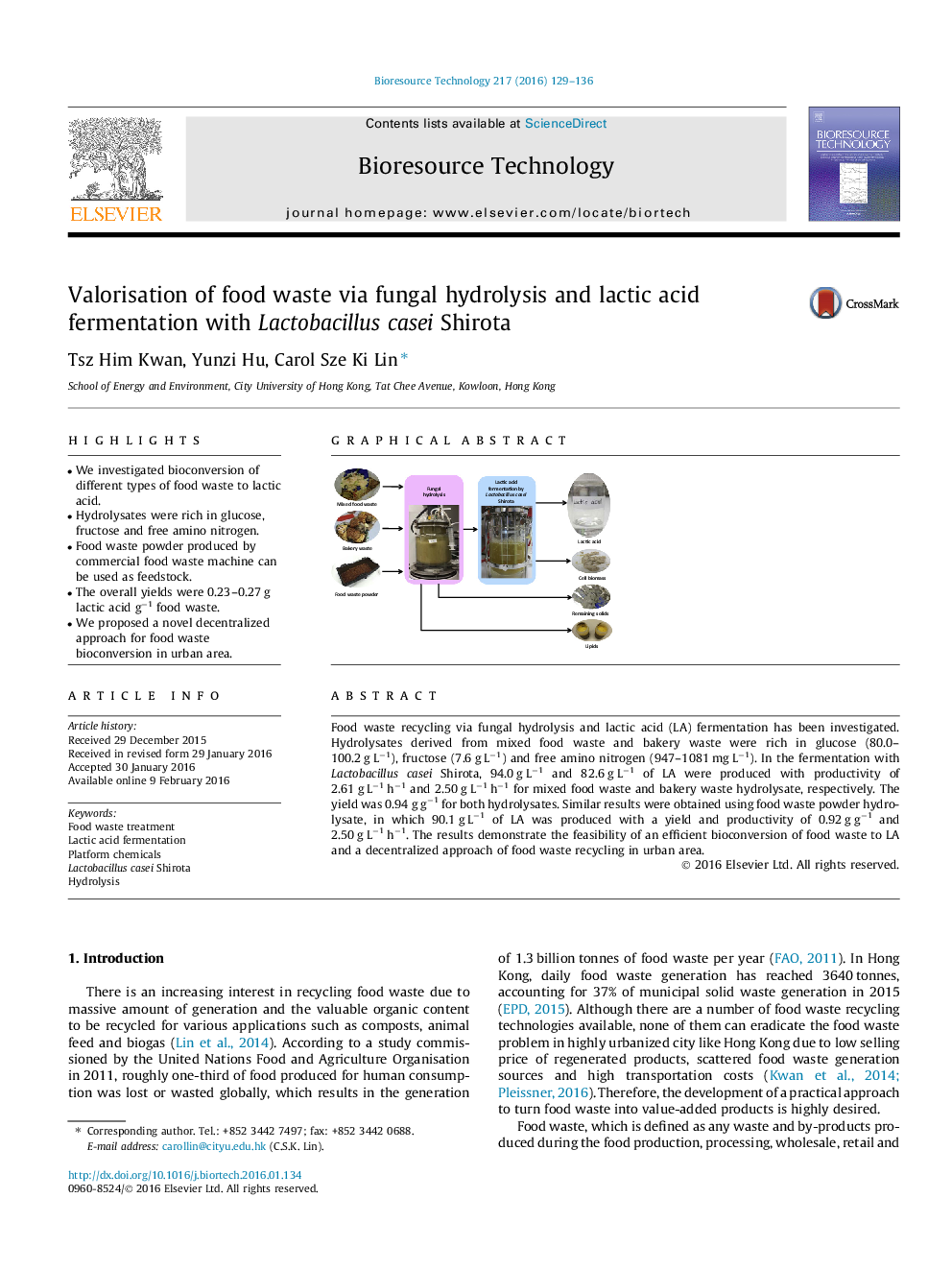| Article ID | Journal | Published Year | Pages | File Type |
|---|---|---|---|---|
| 679148 | Bioresource Technology | 2016 | 8 Pages |
•We investigated bioconversion of different types of food waste to lactic acid.•Hydrolysates were rich in glucose, fructose and free amino nitrogen.•Food waste powder produced by commercial food waste machine can be used as feedstock.•The overall yields were 0.23–0.27 g lactic acid g−1 food waste.•We proposed a novel decentralized approach for food waste bioconversion in urban area.
Food waste recycling via fungal hydrolysis and lactic acid (LA) fermentation has been investigated. Hydrolysates derived from mixed food waste and bakery waste were rich in glucose (80.0–100.2 g L−1), fructose (7.6 g L−1) and free amino nitrogen (947–1081 mg L−1). In the fermentation with Lactobacillus casei Shirota, 94.0 g L−1 and 82.6 g L−1 of LA were produced with productivity of 2.61 g L−1 h−1 and 2.50 g L−1 h−1 for mixed food waste and bakery waste hydrolysate, respectively. The yield was 0.94 g g−1 for both hydrolysates. Similar results were obtained using food waste powder hydrolysate, in which 90.1 g L−1 of LA was produced with a yield and productivity of 0.92 g g−1 and 2.50 g L−1 h−1. The results demonstrate the feasibility of an efficient bioconversion of food waste to LA and a decentralized approach of food waste recycling in urban area.
Graphical abstractFigure optionsDownload full-size imageDownload as PowerPoint slide
